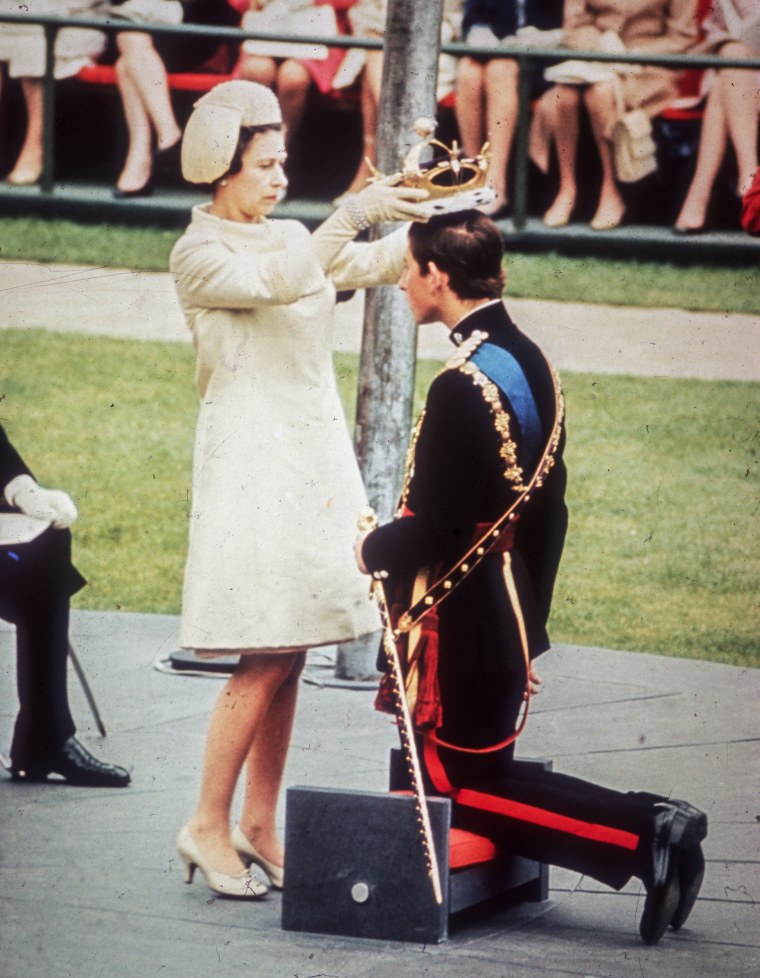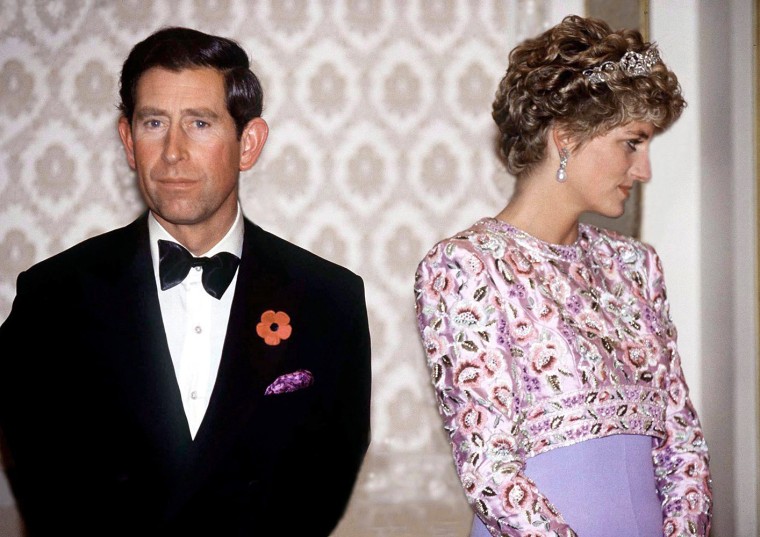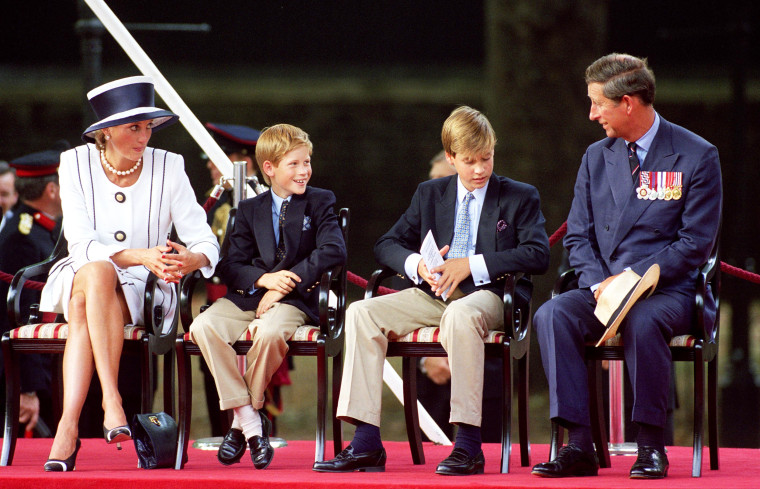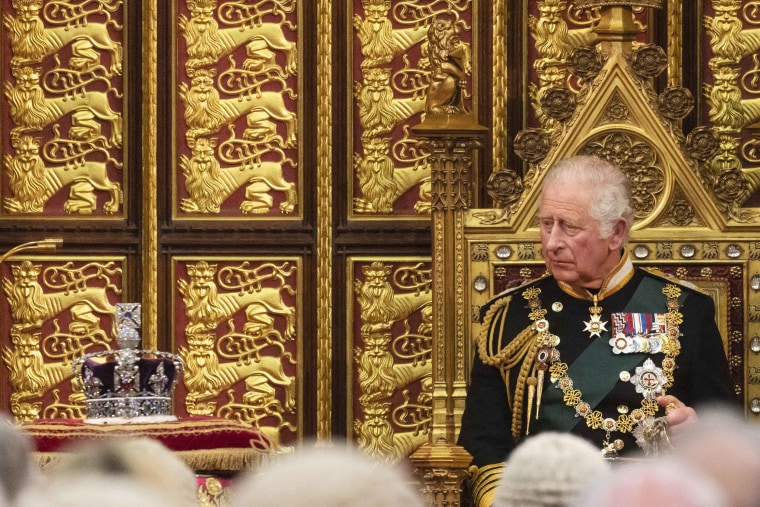King Charles spent decades preparing for the throne. His reign promises to be unlike his mother’s.
Charles #Charles

The king or queen does have weekly meetings with the prime minister. As the seminal 19th century essayist Walter Bagehot wrote in 1867, the British sovereign has “three rights — the right to be consulted, the right to encourage, the right to warn.”
The new king has said he will take a different approach as monarch from his opinionated time as prince, telling the BBC in 2018 it was “complete nonsense” to suggest he would be openly political, because “I’m not that stupid.”
“You only have to look at Shakespeare plays, ‘Henry V’ or ‘Henry IV’ part I and 2, to see the change that can take place. Because if you become the sovereign, then you play the role in the way that it is expected,” he said. “So, of course, you operate within the constitutional parameters.”
Even so, some critics believe his on-the-record views could cause a constitutional crisis if the government adopts a position he has previously backed — from supporting farmers to approving controversial architecture — even if there is no evidence he has actually intervened.
Born in a gilded ballroom
The queen always seemed preternaturally suited for this quiet, obliging role, replete with towering soft power but little hard power. By contrast, the new king has always appeared an awkward fit.
He was born in Buckingham Palace on the evening of Nov. 14, 1948, while his father, Prince Philip, played squash. Outside, Britain was recovering from the ravages of World War II. The streets of London were still rubble-strewn from the Blitz, and its people faced dire economic hardship that would lead to the foundation of the country’s modern welfare system. Inside the palace, Prince Charles had entered into a parallel world of immense privilege, but also preordained duty.
 The queen with and Princess Anne and Prince Charles, age 4, at Balmoral Castle in 1952.Lisa Sheridan / Getty Images
The queen with and Princess Anne and Prince Charles, age 4, at Balmoral Castle in 1952.Lisa Sheridan / Getty Images
The “newborn heir was brought to the vast gilded ballroom by the royal midwife” and placed in a cot “for viewing by the royal courtiers,” Sally Bedell Smith wrote in her unauthorized biography, “Prince Charles: The Passions and Paradoxes of an Improbable Life.” No sooner had Charles been born than he “officially became public property,” Smith said.
Less than four years later, he became heir to the throne after the death of his grandfather George V. It was not an easy childhood, Smith and other biographers and royal historians agree. His mother and disciplinarian father were often absent, touring the Commonwealth for months at a time and missing Charles’ first two Christmases and his third birthday.
Charles was a “very sensitive and emotional young man,” so his “alpha male” father tried to toughen him up by sending him to Gordonstoun, a rough, spartan boarding school in Scotland, according to royal biographer Tina Brown, speaking with NBC News’ Keir Simmons for his podcast “Born to Rule” this year. This is “absolutely the story of his life” — Charles’ family “constantly trying to shove him into this mold, because he was the future king, that he just didn’t fit,” Brown said.
He graduated with middling grades, later describing the experience as “a prison sentence.”
At age 21, Charles told a BBC radio program that realizing he would be king was “something that dawns on you with the most ghastly, inexorable sense.”
 The queen crowns Charles as Prince of Wales at Caernarvon Castle in Wales on July 1, 1969.Hulton Archive / Getty Images
The queen crowns Charles as Prince of Wales at Caernarvon Castle in Wales on July 1, 1969.Hulton Archive / Getty Images
He had entertained ambitions of being a train driver, a soldier and even a big-game hunter, he said, “until I realized I was rather stuck.” That tortured listlessness did not fade. In 1994, a TV documentary captured a child asking him, “Who are you?” to which Charles replied, “I wish I knew.”
Charles had a long love affair with the woman who later would become his wife. But Camilla Shand, as she was then called, would only loom in the background for the best part of three decades. Her family was not aristocratic enough for her to be a suitable wife for the heir to the throne. She had also been in several relationships already, and “the conventions of the time called for the heir to the British throne to marry a woman who appeared to be at least virginal,” Smith wrote in her book.
Camilla was also courting another man, Andrew Parker Bowles, whom she would marry to Charles’ dismay while he was away on Navy duty, in what Smith calls “Britain’s upper-class Venn diagram of infidelity.” So Charles was left at a loose end, struggling to draw from the diminishing pool of debutantes who satisfied the stringent royal criteria.
Lady Diana Spencer was 12 years Charles’ junior, and they had met only around a dozen times before he asked her to marry him. Diana hailed from one of Britain’s oldest families, and as a 19-year-old kindergarten teacher she was far from a socialite whose romantic history might ruffle royal feathers.
 Charles and Diana during their last trip together in South Korea in 1992.Tim Graham / Getty Images file
Charles and Diana during their last trip together in South Korea in 1992.Tim Graham / Getty Images file
It was a union ill-suited to either party. “Pressured and panicked, he had rushed into a decision before he was ready, understanding little about the rosy-cheeked girl of 19 who gave him beguiling sidelong glances,” Smith writes.
Asked at a news conference whether he and Diana were in love, Charles responded, “Whatever ‘in love’ means.”
They married on July 29, 1981, in London’s St. Paul’s Cathedral. But during the marriage Charles was often absent on royal tours. Diana became increasingly isolated, descending back into the depression and bulimia that she later revealed had afflicted her since childhood.
Diana and Charles’ marriage failed in spectacular public fashion, with mutual infidelity, separation and divorce, followed by Diana’s death in 1997 in a car crash in Paris. A perception that the royals were unsympathetic during that period of national mourning drove down their approval levels.
Charles’ affair with Camilla was among the reasons Diana cited for the breakdown of the royal couple’s marriage, saying in 1995, “There were three of us in this marriage, so it was a bit crowded.”
After Diana’s death, Camilla became something of a hated figure and was regarded as a homewrecker by many Britons who were grieving their beloved Diana. Charles tried to push back, hiring his own spin doctor, Mark Bolland, apparently in an attempt to rejuvenate her public image.
It is not clear whether that has worked, with Camilla enjoying only 40% popularity today, according to YouGov. There were long-standing questions about whether she would ever be allowed to be Charles’ wife, but they seemed to be put to rest after she was permitted to sit in the royal box during the queen’s golden jubilee in 2002. They married in 2005, after both their spouses had died.
Charles and Diana had two sons: Prince William, now the heir to the throne, and Prince Harry, who lives in California with his wife, Meghan Markle, having stepped back from front-line duties after an acrimonious split involving allegations of racism in the royal family.
 Princess Diana, Prince William, Prince Harry and Prince Charles at the VJ Day 50th anniversary celebrations In London on Aug. 19, 1995.Antony Jones/Julian Parker / UK Press via Getty Images file Black spider memos
Princess Diana, Prince William, Prince Harry and Prince Charles at the VJ Day 50th anniversary celebrations In London on Aug. 19, 1995.Antony Jones/Julian Parker / UK Press via Getty Images file Black spider memos
The new king is not short of supporters, with many seeing him as something of a soothsayer when it comes to his decadeslong campaigning for the environment. A keen gardener, he was ridiculed as recently as 2010 after he admitted talking to his plants.
When he left the Royal Navy in 1976, he used his 7,000-pound pension (around $8,500) to set up the Prince’s Trust, which aims to “help vulnerable young people get their lives back on track.” It would be the first of more than two dozen charities the prince founded, including the Prince’s Foundation and the Prince’s School of Traditional Arts.
Toward the end of the queen’s life, Charles took on more of her duties, as a function of the queen’s increasing frailty but also, commentators said, as a way to prepare the public for his looming reign.
However, unlike the queen — who navigated 70 years on the throne with little controversy — Charles has given himself no such easy ride waiting in the wings.
In 2015, The Guardian newspaper won a five-year legal battle to secure the release of a series of letters Charles had written lobbying British government ministers on a variety of issues, from obscure environmental causes to bogus alternative medicines. The “black spider memos” — so named because of his handwriting — were seen as a big no-no for the supposedly apolitical crown.
And last month, the Charity Commission, a government regulator, looked into donations Charles received from an ex-prime minister of Qatar from 2011 to 2015.
The Sunday Times reported that the prince personally accepted three suitcases each containing 1 million euros in cash (around the same value in dollars), which he passed on to the Prince of Wales’s Charitable Fund. The fund’s chairman, Sir Ian Cheshire, confirmed to the newspaper that at least one of the donations took place and said all the correct processes were followed.
 Charles stood in for the queen at the state opening of Parliament in May.Dan Kitwood / Getty Images file
Charles stood in for the queen at the state opening of Parliament in May.Dan Kitwood / Getty Images file
The Charity Commission eventually decided not to take further action, according to a statement last month that gave no details of the case.
Clarence House did not confirm the details of the cash donations, saying in a statement only that they “were passed immediately to one of the Prince’s charities who carried out the appropriate governance and have assured us that all the correct processes were followed.”
The new king’s record has caused deep unease among Britain’s monarchists — and a gleaming sense of opportunity for its anti-royalist “republicans.”
The queen reigned so long that in many ways she came to define Britain, a once-mighty country now diminished and searching for its place in the world. A world without her is difficult to contemplate, a world with Charles as king equally so.
“It’s going to lead to lots of sort of existential questions: Who are we? What do we stand for?” Daisy McAndrew, a royal commentator, said in an interview conducted before the queen’s death. “What is modern Britain? What do we want now? Do we want Charles? Do we want a monarchy?”